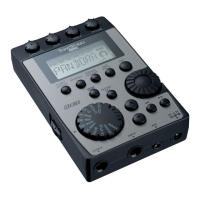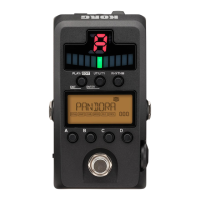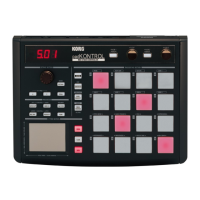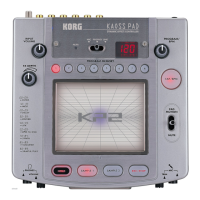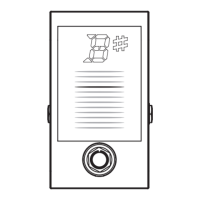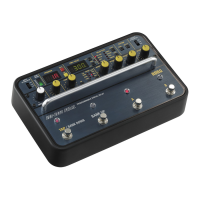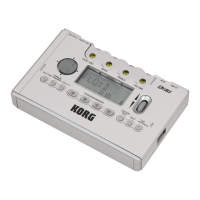
Do you have a question about the Korg Pandora PX5D and is the answer not in the manual?
| Brand | Korg |
|---|---|
| Model | Pandora PX5D |
| Category | Recording Equipment |
| Language | English |
Guidelines for optimal and safe placement of the unit.
Correct power connection and avoiding interference with other devices.
Proper physical handling and cleaning instructions for the unit.
Warnings against liquids and metal objects entering the equipment.
Compliance notice for digital device interference in residential areas.
Instructions for environmentally responsible product disposal in the EU.
Introduction to the KORG PANDORA PX5D and user manual.
Overview of the PX5D's multi-effect, REMS modeling, and editing features.
Highlights of Auto Tuner, Rhythm & Bass, Phrase Trainer, AUX Pitch, and TAP/BYPASS functions.
Using the encoder for operation and connecting via USB.
Explanation of REMS and instructions for powering the unit.
How to interpret the low battery warning icon.
Details INPUT, AUX, OUTPUT jacks, control dials, and power switch.
Explains RHYTHM, UTILITY, PHRASE TRAINER, PROGRAM MEMORY, ENTER/REC, EXIT, TAP/BYPASS buttons.
Covers LCD screen, CURSOR, FOOT SW jack, USB connector, DC input, and Value encoder.
Explains Effect Chain, Program Name, USB, Low Battery, Mode, and Variation icons.
Covers Program Number/Value display, ORIG icon, and Bar graph.
Illustrates and explains connections for amps, headphones, foot switches, and computers.
Steps to connect the PX5D to a computer and utilize the editor software.
How to record PX5D output or play computer audio through the unit.
Steps for connecting and setting up the PX5D for the first time.
How to quickly adjust effect parameters using control dials.
How to select programs and assign them to memory buttons.
Assigning and using foot switches to change programs.
How to adjust the overall output volume of the unit.
How to disable all effects for a dry signal.
How to silence the output signal.
How to access and use the tuner when bypassed or muted.
Adjusting the tuner's calibration for accurate pitch detection.
Customizing the encoder's behavior for program or master level control.
How to disable most controls to prevent accidental changes during performance.
Allows selection and playback of a single rhythm & bass pattern.
Connects multiple rhythm & bass patterns sequentially for playback.
Plays built-in demo songs with various playback options.
Choosing recording types (AUX, GTR/BAS, JAM) and duration.
Steps for starting, stopping, and managing recordings.
Looping, adjusting playback speed, and pausing recorded phrases.
Instructions for saving a recorded phrase to memory.
How to choose, turn on/off, and adjust parameter values for effects.
Details on Dynamics, Amp, Cabinet, Modulation, Delay, Reverb, and Noise Reduction effects.
Renaming and writing (saving) edited programs.
How to select and change settings within Utility mode.
Details on Backlight, Key Transpose, Bass Cancel, Amp/Line select, and Foot Switch settings.
Configuring USB Send, Receive, and Audio Interface modes.
Using the PX5D as a MIDI sound generator for bass and drums.
How to restore the unit to its original factory settings.
Details for DYNA effects like compressor and auto-wah.
Details for AMP and CAB models simulating amplifiers and cabinets.
Details for cabinet simulation effects.
Details for MOD effects like chorus, flanger, and phaser.
Details for various delay effects.
Details for different reverb effects.
A comprehensive list of all preset program names and their numbers.
A catalog of all rhythm and bass patterns included in the unit.
Addresses problems with power not turning on or no sound output.
Resolving issues with AUX jack volume levels.
Troubleshooting when effects or the tuner are not working.
Problems related to software installation and USB connectivity.
Details on effects, programs, inputs/outputs, power, dimensions, and weight.

